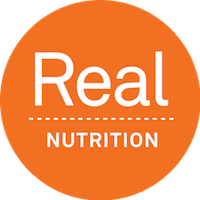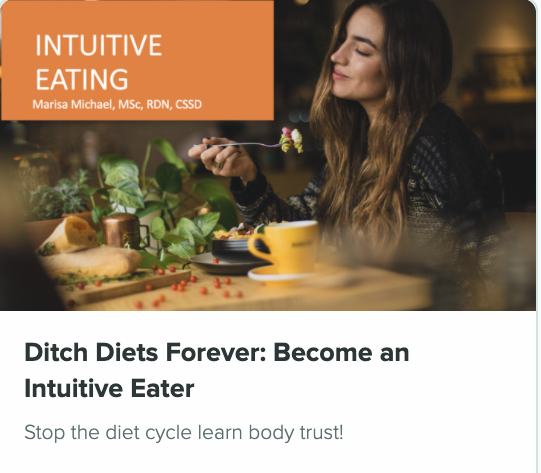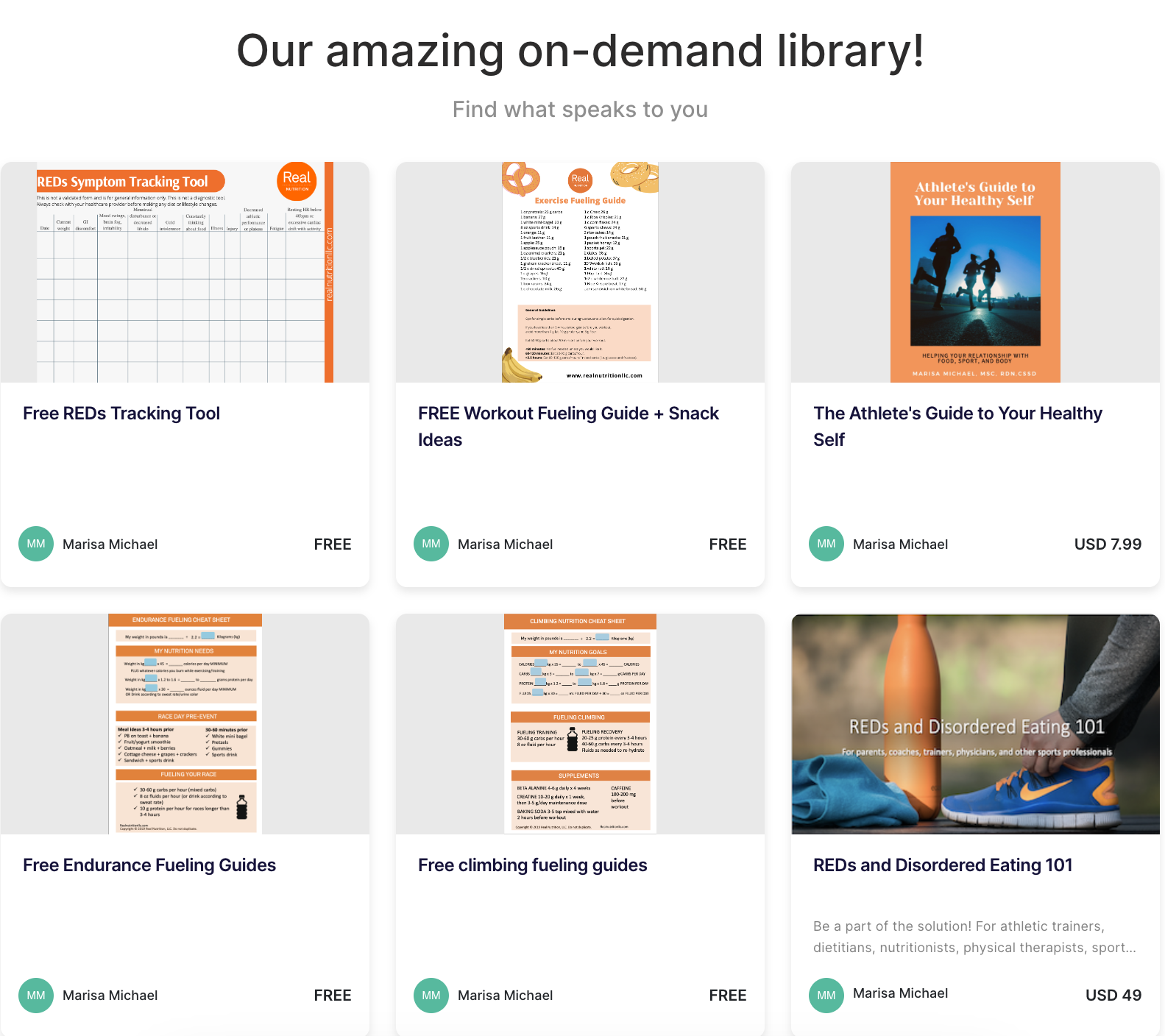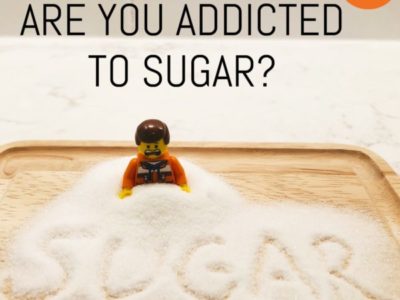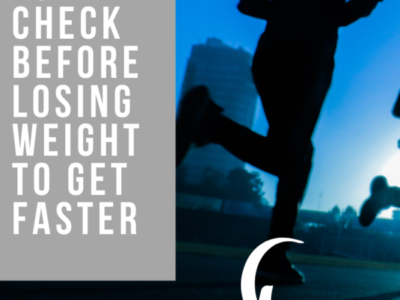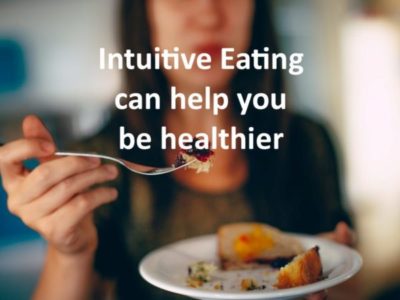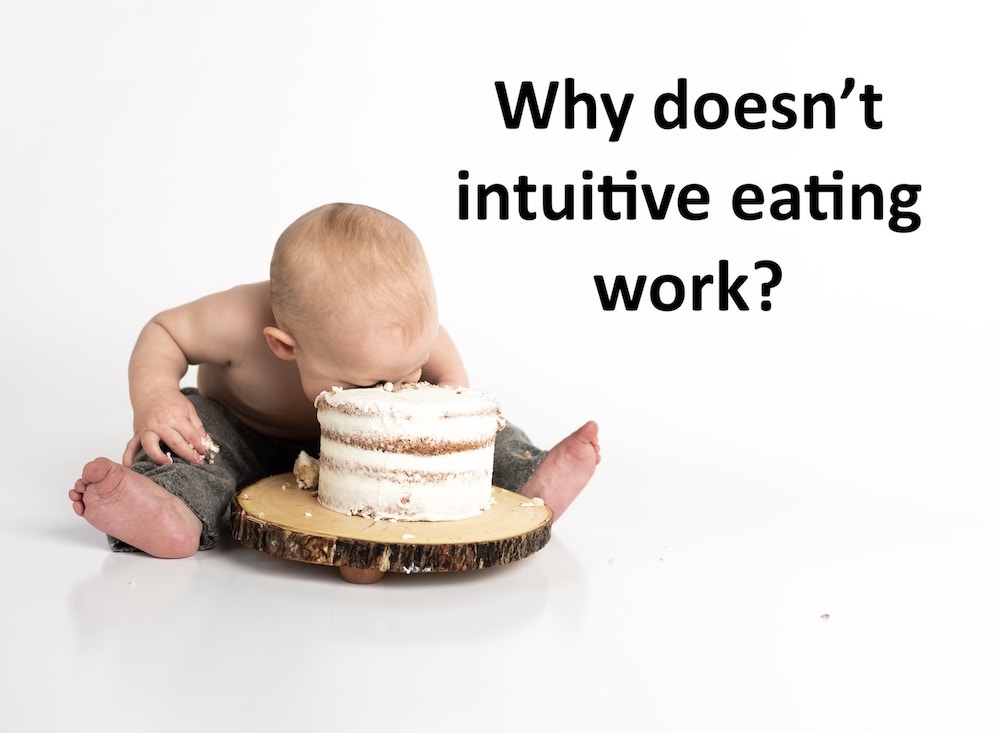
Why doesn’t intuitive eating work?
Intuitive eating is a really powerful framework that helps people approach food in a holistic way. It’s centered in body attunement: being able to discern body cues such as hunger and fullness to guide what, when, and how much you eat. Babies and toddlers already have this figured out. They are able to tune into body cues to know when and how much to eat. You had it figured out to, when you were tiny, but somewhere along the way, food messaging got in the way of you paying attention to your internal cues.
People often think intuitive eating means eating all the foods! When I introduce intuitive eating to my clients, usually their first reaction is “What, are you crazy? If I eat anything I want, whenever I want, that would be horrible for my health!” If you scroll the hashtag #intuitiveeating on Instagram, you’ll see lots of pink donuts and ice cream.
Yes, if all the real intuitive eating framework meant was “Eat when you’re hungry, stop when you’re full, eat what you feel like eating,” your health probably would suffer. But that’s not what the true intuitive eating framework is all about. It’s made up of 10 principles to guide your approach to food, and help you trust your body more. It’s even been backed up by over 120 scientific studies showing that it has improved outcomes like less anxiety around food, improved blood sugars, and more.
Sometimes, though, it doesn’t “work.” Here’s why.
Your idea of intuitive eating “working” means weight loss
Often people think if intuitive eating “worked,” they would lose weight. Nope. If your definition of it “working” is weight loss, intuitive eating is not the method you want to use.
Intuitive eating is a weight-inclusive model, which means weight is irrelevant. It’s not for weight loss or changing your appearance or shape. It’s for healing your relationship with food and body. That can’t happen if you’re trying to manipulate it.
When people implement intuitive eating, four things can happen:
- You stay the same weight
- You lose weight if you were overeating and learn how to eat according to fullness cues
- You gain weight if you had been artificially holding your body at a lower weight through restriction or dieting
- You gain weight initially as you learn to eat “all the things” without restriction, but then later settle down into your body’s preferred set point
You’ve been dieting so long you don’t have hunger cues
If you’ve gone through a period (even decades!) of chronic dieting, yo-yo dieting, or an eating disorder, you may not have hunger cues in place. It’s hard to eat intuitively and respond to hunger if you don’t get those cues, or don’t know what they are and how to detect them. Chronically ignoring hunger cues tamps them down, so eventually you don’t have them at all! Restriction and dieting does this.
You’ve been dieting so long you don’t have fullness cues
Similarly, dieting and restriction often leads to early satiety, meaning you get full really fast, even with small amounts of food. This makes it difficult to nourish your body and eat enough calories. It can turn into a vicious cycle of under-eating (not on purpose, but just because you feel full really fast), then your body wanting more food later on, then bingeing in response to the restriction. Intermittent fasting can do this, as well as diets in general.
Your exercise is messing with your hunger cues
Endurance exercise or excessive exercise sometimes dampens hunger cues. This isn’t a problem if you’re an athlete committed to your training. You just need to be aware that just because your appetite isn’t there doesn’t mean you don’t need that much food. Athletes often have to eat beyond normal fullness cues, just to be able to get enough fuel in to support their training.
Intuitive eating has a principle called Gentle Nutrition, which basically means choosing foods that nourish and support your body. Athletes can use this principle to help them with fueling appropriately, nutrient timing, and even fueling during training. Eating the right foods at the right time may seem regimented instead of intuitive, but if you’re an athlete that’s exactly what you need to do to practice Gentle Nutrition!
Same goes with anyone with a health condition that requires them to eat a certain diet. Someone with diabetes or bowel disease can be an intuitive eater with Gentle Nutrition–choosing foods that nourish and energize you.
Exercise compulsion and excessive exercise are symptoms of eating disorders–so if this is the case, be sure to seek professional help. If you have a good relationship with food and body, and just have a heavy training load, that’s different than exercise compulsion. But either way, you may not experience hunger, and need to eat even in the absence of hunger cues. Learn how to can manage low appetite from intense exercise.
Learn more about intuitive eating for athletes here!
You are calling it intuitive eating, but you’re really restricting
Many people embark on their intuitive eating journey and end up still restricting. They tell themselves they are eating intuitively, but don’t allow themselves to have the food that is truly satisfying (like the burger instead of the salad). They avoid dessert. They are still chasing the thinner body. This isn’t intuitive eating. Even eating mindfully isn’t intuitive eating.
Intuitive eating can’t work if you are holding onto any kind of diet beliefs, restrictive mindset, or not truly trying to heal your relationship with food. If you have any diet culture at play, intuitive eating will fail for you. You have to be all in. But it’s so worth it!
What’s really cool is that, after a while, the foods that used to be forbidden (and then later binged on) will lose their power. In the absence of dieting, most people can regulate their intake on their own quite nicely and also honor health. Sure, it’s fun to eat the cookies or the ice cream, but intuitive eaters can do so without bingeing, without overthinking it, and without guilt or shame.
You’ll be able to find true food freedom, not the fake food freedom that diets claim to offer. Food freedom isn’t a strict set of do’s and don’ts. Whole30 is a prime example. A long list of foods to avoid is not food freedom. It’s not even a permanent solution. Lifting all restrictions and learning how to really implement intuitive eating is a great way to make peace with food, and have it be a non-issue in your life. But it takes time, and sometimes it takes professional help to guide you through it!
Want to learn more about intuitive eating?
Learn how to Ditch Diets Forever and Become an Intuitive Eater
Check out our amazing nutrition resources, including on-demand courses, free downloads, and webinar replays.
- Nutrition for Climbers
- The Ultimate Guide to Useful Sports Supplements
- Ditch Diets and Become an Intuitive Eater
And be sure to follow us on Instagram!
Book an appointment with the dietitian
~This is general information only and not nutrition advice. Always talk with your healthcare provider before undergoing any diet or lifestyle change.
